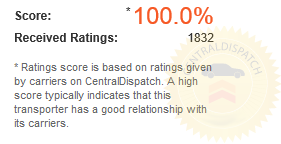Bad news for foes of distracted driving: A new survey from State Farm says the problem is getting worse, even though drivers know better.
In July 2013, the Annual State Farm Distracted Driving Survey polled 1,014 adults across the U.S., asking them about their behavior behind the wheel and their suggestions for addressing the problem of distracted driving.
The survey’s most remarkable finding was that the number of motorists who access the Internet (e.g. check email, surf websites, etc.) has nearly doubled over the past four years. In 2009, just 13 percent of motorists admitted that they’d accessed the Internet while driving. In 2013, that figure had jumped to 24 percent.
The reason for the increase seems clear: More drivers are accessing the Internet because increasingly ubiquitous smartphones have made doing so very, very easy. Over 80 percent of drivers under 50 now own a smartphone, and the numbers are edging upward, even among seniors. In 2011, for example, 23 percent of motorists 65 and older had smartphones; today, that figure hovers at 39 percent.
The good news is that older, experienced drivers are aware of distracted driving’s dangers. In 2011, 61 percent of motorists 30 and older admitted to talking on a cell phone while driving. In 2013, that number had fallen to 55 percent. The figures for texting ticked up slightly among the 30+ demographic — 32 percent admitted that they’d texted while driving in 2011 and 33 percent said they’d done the same in 2013 — but that’s nearly flat.
The bad news is that drivers 18 to 29 still don’t get the message. In 2011, 68 percent of motorists in that age range said that they talked on a hand-held cell phone while driving; in 2013, that figure hit 76 percent. The figures for texting are just as grim: in 2011, 61 percent of drivers under 30 said that they’d texted from behind the wheel; in 2013, 70 percent said the same.
Of course, as with smoking, alcohol abuse, and other bad habits, distracted drivers know that what they’re doing is wrong. In fact, 91 percent of those surveyed said they agreed either “strongly” (74 percent) or “somewhat” (17 percent) with a law or other measure that would prevent motorists from texting or emailing while driving. Whether such laws would have any effect on motorists’ habits is up for debate, though: over half of all respondents said distracted driving laws currently on the books are rarely enforced.
This story originally appeared at The Car Connection



